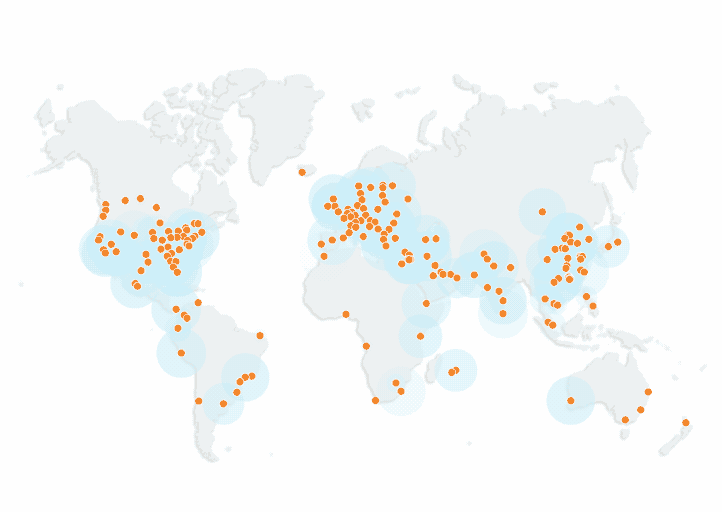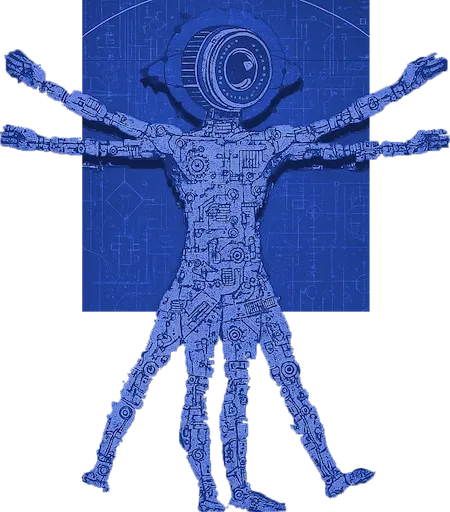Quantum Key Distribution: The Next Leap in Global Secure Communications

Imagine a world where your secrets are safe—not just from hackers, but from the very computers of the future. Where the laws of physics, not just clever math, stand guard over your messages. Welcome to the dawn of quantum-secure networks, where BlackBerry’s legendary architecture meets the mind-bending power of quantum key distribution (QKD).
The Quantum Revolution: Exploiting the Enigmatic Wave Function Collapse
Let’s set the stage. The digital world is under siege. Cyber threats multiply, and quantum computing—once the stuff of science fiction—now looms as a real, existential threat to the cryptography that shields our data. RSA, ECC, all those familiar acronyms? They could quickly become obselete when quantum computers begin menifesting into real use cases.
But what if, instead of relying on the difficulty of factoring huge numbers, we could anchor our security within a fundmental property of physics? Enter quantum key distribution.
QKD: A Sublime Combination of Physics and Cybersecurity
Here’s the magic: QKD uses quantum particles—usually photons—to create and share encryption keys. And exploiting the perfectly delicate nature of quantum mechanics, any attempt to eavesdrop is instantly detectable. It’s security with a built-in alarm system, courtesy of Heisenberg’s uncertainty principle and the no-cloning theorem.
Let’s break it down:
- Prepare-and-Measure Protocols (BB84): Imagine Alice and Bob, our perennial cryptographic pen pals. Alice sends photons to Bob, each polarized in a random direction. Bob measures them, also at random. Later, they compare notes (over a public channel) to spot any anomalies. If Eve, the eavesdropper, tried to intercept, her meddling would show up as errors. Only the untouched data becomes their shared secret key. This is the BB84 protocol—simple, elegant, and proven in the real world.

- Entanglement-Based Protocols (E91): Now, let’s get weirder. Suppose Alice and Bob each receive one half of an entangled photon pair. When Alice measures hers, Bob’s instantly reflects a correlated result, no matter if he’s next door or on the other side of the planet. If Eve tries to intercept, the entanglement shatters, and the correlation vanishes. Artur Ekert’s E91 protocol uses this quantum strangeness to guarantee security. The result? Keys that are not just secret, but provably unstealable.

Why does this matter? Because once Alice and Bob have their quantum-generated key, they can encrypt their messages with ciphers that are, in theory, unbreakable. Even if someone records every encrypted message for years, without the key, they’re left with gibberish.

From Lab Curiosity to Global Backbone
Not long ago, QKD was a laboratory oddity—delicate, expensive, and limited to short distances. But the pace of progress has been nothing short of breathtaking.
-
Record-Breaking Distances: In 2017, China’s “Micius” satellite shattered records, enabling QKD between ground stations 1,200 kilometers apart. Soon after, it beamed secure keys between China and Austria, powering the world’s first quantum-encrypted intercontinental video call. The message was clear: QKD works, even across continents.
-
Satellites and the Quantum Internet: Fast-forward to 2024. A South African-Chinese team used a low-Earth-orbit microsatellite to perform QKD over 12,900 kilometers—half the globe in a single satellite pass. Suddenly, the idea of a handful of satellites securing the world’s communications wasn’t just plausible—it was happening.
-
Commercialization and the Race to Space: Companies like IonQ are betting big, acquiring satellite firms and building quantum repeaters to overcome distance limits. Their vision? A constellation of quantum-enabled satellites, forming the backbone of a global quantum internet. Meanwhile, the European Space Agency is prepping Eagle-1, a QKD satellite set to launch by 2026.

- Terrestrial Networks: On the ground, cities like Geneva, Vienna, Beijing, and Tokyo have become testbeds for QKD over fiber. Banks, governments, and even voting systems have piloted quantum-secured links. The challenge now is scaling up—connecting these islands of security into a global ocean.
BlackBerry’s Legacy: Lessons from a Security Pioneer
Before “quantum” was a buzzword, BlackBerry was the gold standard for secure mobile communications. Their secret? A tightly integrated ecosystem—hardware, software, and network operations all working in concert. Every message zipped through BlackBerry’s Network Operations Centers (NOCs), encrypted end-to-end. In the enterprise model, only the company—not BlackBerry—held the keys. Even if the data passed through BlackBerry’s servers, it was unreadable to anyone but the intended recipient.
But there was a catch. For personal users, the keys were managed by BlackBerry or the carrier, opening the door to government pressure and potential compromise. The lesson? True security means the user (or their organization) holds the keys—never the service provider.
The Quantum-BlackBerry Synthesis: A Blueprint for the Future
Now, imagine fusing BlackBerry’s robust, centralized architecture with the unbreakable security of QKD.
- Quantum Hubs: Picture data centers—quantum hubs—equipped with QKD devices. These act as the nerve centers, routing communications and sharing quantum-generated keys over dedicated fiber or satellite links. A message from New York to London? It’s encrypted with a key born from quantum entanglement, impossible to intercept undetected.

-
End-to-End Key Distribution: The dream is to secure even the “last mile” to the user’s device with quantum keys. While we’re not there yet (your phone doesn’t have a quantum chip—yet), we can get close. When a user connects to a hub, they establish a session key, refreshed frequently with quantum-derived randomness. Two users, each linked to their local hub, can share a secret that originated from a QKD backbone. The result? End-to-end encryption, with keys that no one—not even the network operator—can access.
-
Minimal Infrastructure, Maximum Impact: Here’s the beauty: you don’t need a quantum link to every device. A handful of satellites and ground stations can secure the backbone, distributing keys to millions of users via classical channels. It’s a high-leverage approach—quality over quantity.
-
A Real-World Example: Suppose a company has offices in New York and Tokyo. In the old world, they’d trust cloud services and hope their encryption holds. In the quantum world, each office connects to its regional QKD hub. The hubs share a stream of quantum keys, and every message is encrypted with a key that’s never been seen by human or machine. Even if the message crosses oceans and routers, it’s safe—because the key is quantum, and quantum can’t be faked.
Why This Matters: The Quantum Advantage
-
Eavesdropper-Proof: Any attempt to intercept the key exchange is instantly detected. The network can refuse to use compromised keys, ensuring secrets stay secret—even from nation-states.
-
Future-Proof: QKD’s security is rooted in physics, not math. Quantum computers can’t break it, because there’s nothing to break—no hard problem to solve, just the laws of nature.
-
Global Reach: With just a few QKD-enabled links, you can secure communications across continents. As the tech matures, more nodes can be added, but even a skeleton network offers massive protection.
-
Zero-Trust, Zero-Knowledge: No central authority holds all the keys. Not the provider, not the government, not even the network operator. Only the intended recipients can decrypt the data. This is privacy by design, not by promise.
-
Resilience to Quantum Attacks: Even if quantum computers become commonplace, the system is safe. QKD protects the keys, and symmetric ciphers (like AES) remain strong when used with truly random keys.
The Road Ahead: Challenges and Opportunities
QKD isn’t a magic bullet. There are hurdles:
-
Distance and Rate: Fiber-based QKD is limited to a few hundred kilometers. Satellites can go further, but need clear skies and precise timing. Quantum repeaters—devices that can extend QKD over long distances—are still in development.
-
Hardware: Today’s QKD gear is bulky and expensive. It’s not in your phone or laptop (yet). Early deployments will focus on high-value targets: governments, banks, critical infrastructure.
-
Integration: Most of the network is still classical—routers, servers, user devices. We need seamless protocols to hand off quantum keys to classical encryption apps. Standards are emerging, but interoperability will be key.
-
Implementation Security: Even perfect physics can be undone by imperfect engineering. Detectors can be tricked, classical channels can be spoofed. Robust authentication (think post-quantum digital signatures) and careful design are essential.
Despite these challenges, the momentum is slowly rising. Costs are falling, key rates are rising, and commercial QKD devices are already on the market. National security agencies are watching closely—some cautious, some eager.
The Vision: Building the Quantum-Era BlackBerry
Bringing it all together, conceptually, the fusion of QKD and BlackBerry-style architecture isn’t just a technical upgrade—it’s a paradigm shift. By starting with a prototype—linking a few key data centers with QKD and running a secure messaging service for a select group—we can prove the concept. Even a small-scale deployment can deliver communications that are impenetrable to eavesdroppers and immune to quantum threats.
Governments, corporations, privacy advocates—they’re all searching for the next leap in secure communications. A fleet of QKD satellites, a handful of quantum hubs, and a network architecture inspired by BlackBerry could deliver ultra-secure messaging, conferencing, and data transfer on a global scale. As quantum technology matures, the network can expand—maybe one day connecting individual devices directly via quantum links.
The pieces are in place: the physics, the technology, the architecture. What’s needed now is vision—and the will to build.
The future of secure communication is being written, photon by photon.
Sources
- Susskind, Leonard, and Art Friedman. Special Relativity and Classical Field Theory: The Theoretical Minimum. New York: Basic Books, 2017. Amazon
- Penrose, Roger. The Large, the Small, and the Human Mind, edited by Malcolm Longair. Cambridge: Cambridge University Press, 1997. Amazon
- Wikipedia: Quantum Key Distribution – Implementation History
- Clavis XG QKD System
- Toshiba: Quantum Key Distribution
- Quantum Zeitgeist: QKD Principles and No-Cloning Theorem
- IonQ: 2025 Press Releases on Space-Based QKD Network
- Christopher Parsons: BlackBerry Network Security Architecture
- Schneier on Security / ACM: BlackBerry Global Key Concerns
- European Space Agency: Eagle-1 Quantum Satellite Initiative
- NIST: Quantum Cryptography Guidelines and NSA Stance
